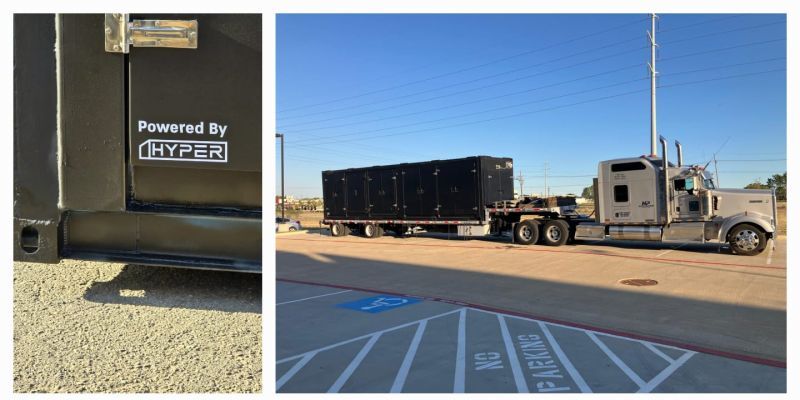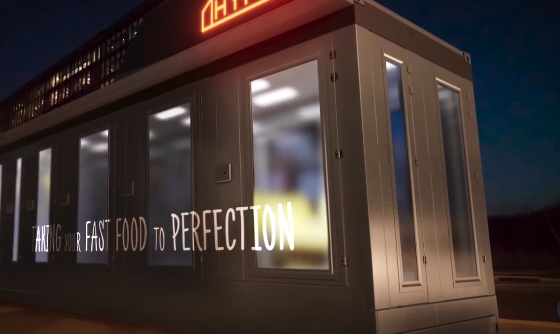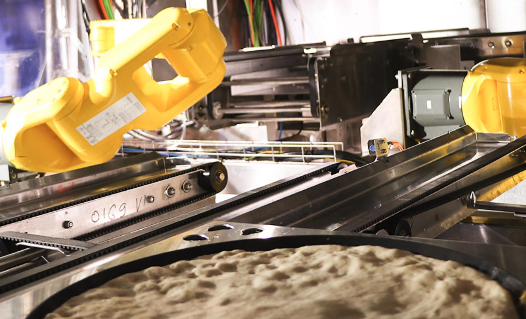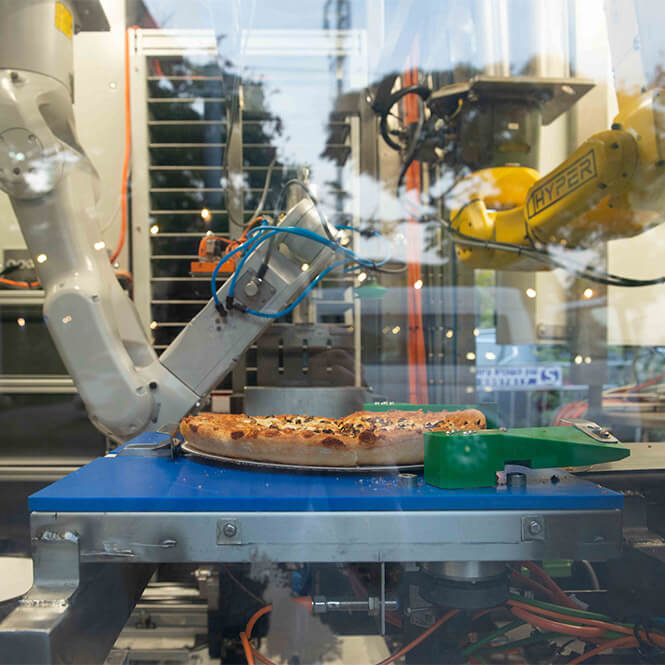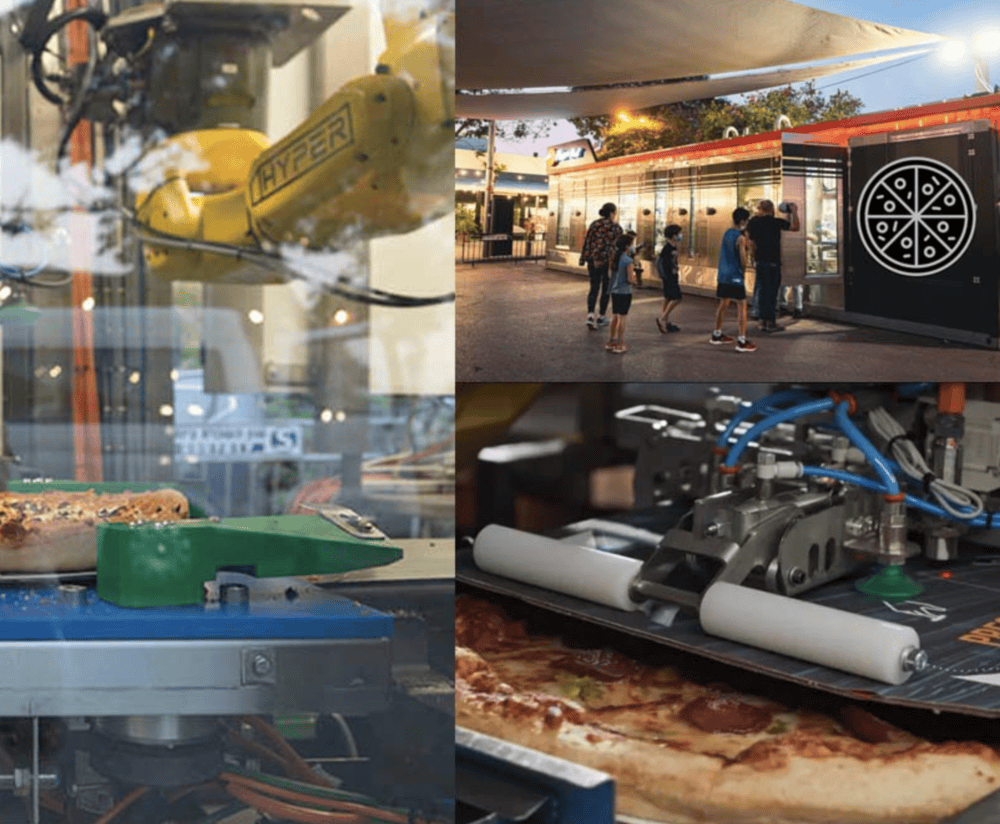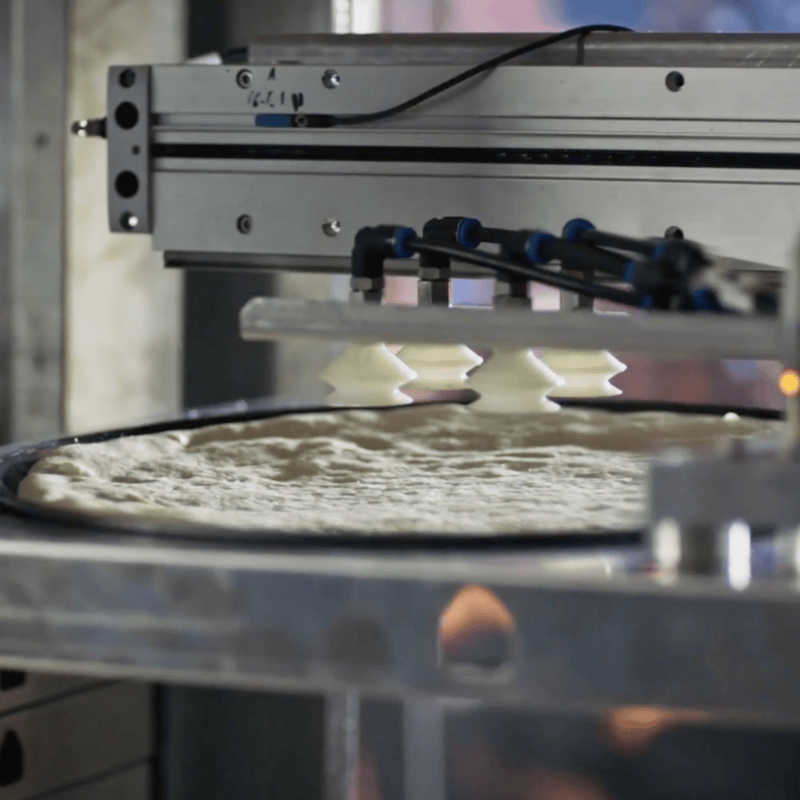Picture yourself walking past a busy intersection and noticing a simple 20-foot steel container quietly serving up perfectly baked, hot pizzas, completely on its own. No bustling kitchen staff, no frantic phone-in orders, and not even a whiff of a delivery scooter. At first glance, you might think this is pure science fiction or a Silicon Valley social experiment. But it’s real, and it’s happening right now.
Can a shipping container really replace a traditional pizza restaurant? Will people accept robots making their food? Could these compact robotic kitchens solve fast-food’s biggest headaches, think labor shortages, rising costs, and food waste, all in one swoop?
You’re about to discover how a simple box, powered by robotics and artificial intelligence, is shaking up what you thought you knew about fast food. Here’s what you’ll learn:
Table of contents
– Introduction: Challenging the pizza box myth
– Myth 1: You need a big kitchen and team for quality pizza
– Myth 2: Robots can’t match human-made flavor or sustainability
– Economic and sustainability impact
– Key Takeaways
Introduction: Challenging the pizza box myth
Most people picture a pizzeria as a cozy corner shop or a lively kitchen filled with flour-dusted chefs. The idea that a 20-foot container could crank out delicious, customizable pizzas around the clock seems almost laughable, or maybe a clever gimmick for a tech show. But that’s exactly the myth being shattered by Hyper Food Robotics, a startup that’s reimagining what fast food can look like in cities, airports, and campuses worldwide.
This isn’t just about squeezing a kitchen into a container. Hyper Food Robotics has created a fully autonomous, plug-and-play pizzeria that can serve up to 50 pizzas every hour. The company’s innovation promises to minimize waste, cut costs, and offer scalable solutions for businesses, all while operating with little to no human intervention. So, what does this mean for your next pizza night, and could this become the norm?
Now, let’s tackle the biggest assumptions head-on and see where reality actually lies.

Myth 1: You need a big kitchen and team for quality pizza
Ask anyone who’s worked in food service: making pizza is a team effort. Dough must be prepared, toppings chopped, ovens manned, orders taken, and boxes stacked, all under the careful watch of a seasoned manager. How could a single, compact metal box replace a crew of cooks and still deliver consistent, hot pizza?
Reality: Compact, tech-powered kitchens redefine space
You might be surprised at what fits inside a shipping container when engineering meets creativity. Hyper Food Robotics has designed its 20-foot pizzeria with two robotic arms, cold storage for up to 240 kinds of dough, dispensers for up to 12 toppings, and intelligent ovens that bake to order. Everything from dough preparation to cooking and boxing is done within that tight space, maximizing every square inch.
This is not a one-off prototype. The system can pump out 50 pizzas per hour, imagine servicing an entire school event or a late-night airport crowd using a footprint no bigger than a city parking space. [Read more on Hyper Food Robotics’ approach].
Real-life example: At a recent expo, a Hyper Food Robotics container fed hundreds of attendees, each pizza crafted and served without a single staff member inside. The only humans involved were outside, monitoring the queue and answering questions from amazed onlookers.
Myth 2: Robots can’t match human-made flavor or sustainability
You’ve probably heard skeptics say, “Sure, robots are fast, but can they really make pizza that tastes great? And what about all that waste, aren’t robots just adding more technology for technology’s sake?”
Reality: Robots deliver consistency, cut waste, and keep things delicious
It’s easy to assume that removing the human touch makes food bland or less appealing. But robots are wired for precision, every scoop of sauce, sprinkle of cheese, and dash of pepperoni is measured and dispensed exactly the same way every time. This means you get the same high-quality product, whether it’s your first order or your fiftieth.
Plus, these robotic kitchens drastically reduce waste. By dispensing toppings with exact measurements and tracking inventory in real time, they minimize overuse and spoilage. Studies show that robotic kitchens like Hyper Food Robotics can cut operational costs by up to 50%, mostly by reducing labor and ingredient waste RichTech Robotics.
Sustainability doesn’t stop with ingredients, either. Containers can be set up to run on solar, and their modular design means fewer construction resources are needed compared to traditional restaurants. That’s a win for both your taste buds and the environment.
Economic and sustainability impact
Lower costs, higher profits
If you run a pizza place, imagine cutting your labor costs in half while running 24/7, with no sick days, no shift changes, and no overtime headaches. Hyper Food Robotics’ data show that robotic kitchens can operate around the clock, allowing pizza brands to serve customers whenever hunger strikes. This level of efficiency means you can open new locations quickly, with less capital, and still keep profits rising [The Spoon covers the story here].
Plug-and-play means rapid expansion
One of the most exciting aspects is how easy it is to install these autonomous pizzerias. The containers are delivered, plugged in, and can be up and running in hours. For fast-food brands, especially those looking to scale quickly or move into high-traffic areas, this changes the game. There’s no need for lengthy construction, hiring, or training. It’s all about speed and simplicity, open today, serve pizzas tonight.
Environmental benefits beyond the hype
Food waste remains one of the industry’s biggest issues. According to the [United Nations], nearly 17% of all food available to consumers is wasted. By using intelligent inventory systems and portion-controlled dispensing, these container kitchens can drastically lower those numbers at the local level.
On top of that, these units can be powered by renewable energy and positioned wherever they’re needed. Imagine a festival, disaster zone, or remote campus, all suddenly able to enjoy fresh pizza with a much smaller carbon footprint.
Consumer acceptance: Are you ready to try robot pizza?
There’s always a bump in the road with new tech. Some customers might hesitate at first, unsure if a pizza made by robots will match what they know and love. But when you see piping-hot pizzas sliding out in minutes, topped just how you like them and served to the same high standard every time, even skeptics get curious.
Younger and tech-savvy crowds are usually the first to try these futuristic meals, but the appeal doesn’t stop there. With growing interest in sustainability and convenience, more people are open to giving robotic kitchens a chance. And when the first bite tastes just as good, or better, than what you’re used to, you might find yourself looking for the closest container next time you crave comfort food.

Key Takeaways
– Autonomous pizzerias in 20-foot containers are already serving real customers and making quality pizza.
– Robotic kitchens maximize efficiency and reduce food waste by up to 50%, benefiting both business owners and the environment.
– Plug-and-play models enable brands to scale quickly and cheaply, requiring minimal setup and no traditional staffing.
– Customers are increasingly open to robot-made food, especially when it offers convenience and sustainability.
– Reducing resource use, labor, and food waste is possible without sacrificing flavor or authenticity.
Maybe you’ll spot a compact pizzeria-in-a-box at your next concert or airport layover. With companies like Hyper Food Robotics leading the charge, it’s clear that the future of fast food is smaller, smarter, and more sustainable than you ever imagined. Are you ready to order your next pizza from a robot chef? What assumptions about food and technology are you ready to question? And if your pizza is perfect every time, does it really matter who, or what, made it?
FAQ: 20-Foot Autonomous Pizzeria by Hyper Food Robotics
Q: How does a 20-foot container function as a fully autonomous pizzeria?
A: The container is equipped with advanced robotics, artificial intelligence, and IoT systems that handle every step of pizza production—from dough storage and topping dispensing to baking and packaging—completely autonomously, without human intervention.
Q: What are the operational benefits of using an autonomous pizzeria unit?
A: These units can produce up to 50 pizzas per hour with consistent quality, operate 24/7, and reduce operational costs by up to 50% by minimizing labor needs and maximizing efficiency.
Q: How sustainable is the autonomous pizzeria model?
A: The system is designed to optimize ingredient usage with precise dispensing, significantly reducing food waste. Its efficient operations also lower energy consumption, supporting a more sustainable fast-food model.
Q: How easy is it to deploy and scale these autonomous pizzeria units?
A: The container follows a plug-and-play model, allowing for rapid deployment and easy setup in various locations. This makes it ideal for fast-food brands seeking to expand quickly without the complexities of traditional build-outs.
Q: What challenges should be considered when integrating autonomous pizzeria units?
A: Integrating advanced robotics with existing infrastructure may require technical adjustments and ongoing maintenance. Hyper Food Robotics addresses this by providing supervision and repair services to ensure smooth, continuous operation.
Q: How are consumers responding to fully automated pizzerias?
A: While some may prefer traditional service, many tech-savvy and eco-conscious consumers are drawn to the reliability, novelty, and sustainability offered by autonomous pizzerias. Consistent product quality and innovative service can help drive acceptance
About Hyper Food Robotics
Hyper Food Robotics specializes in transforming fast-food delivery restaurants into fully automated units, revolutionizing the fast-food industry with cutting-edge technology and innovative solutions.
Hyper-Robotics addresses inefficiencies in manual operations by delivering autonomous robotic solutions that enhance speed, accuracy, and productivity. Their robots solve challenges such as labor shortages, operational inconsistencies, and the need for round-the-clock operation, providing solutions like automated food preparation, retail systems, and kitchen automation.
